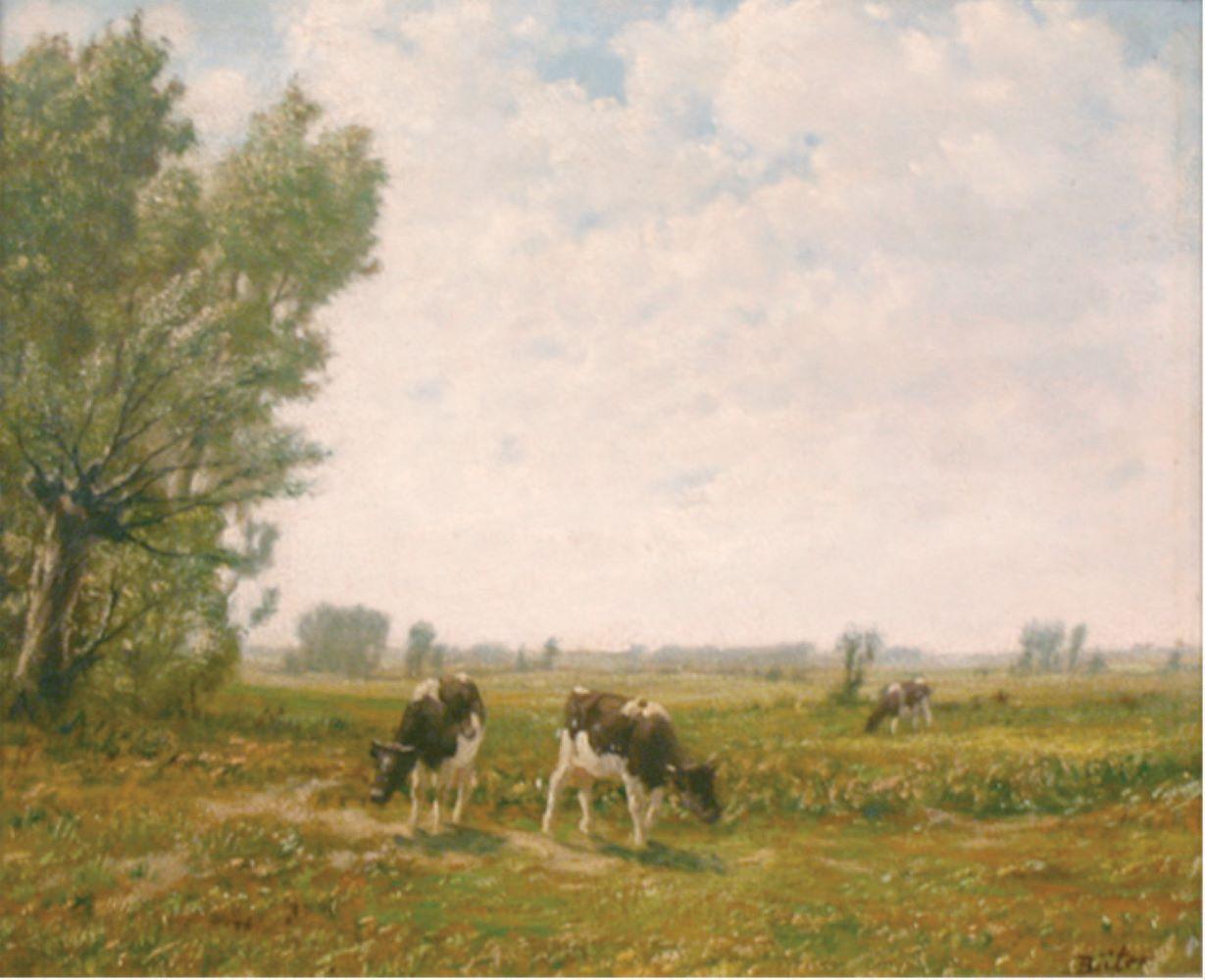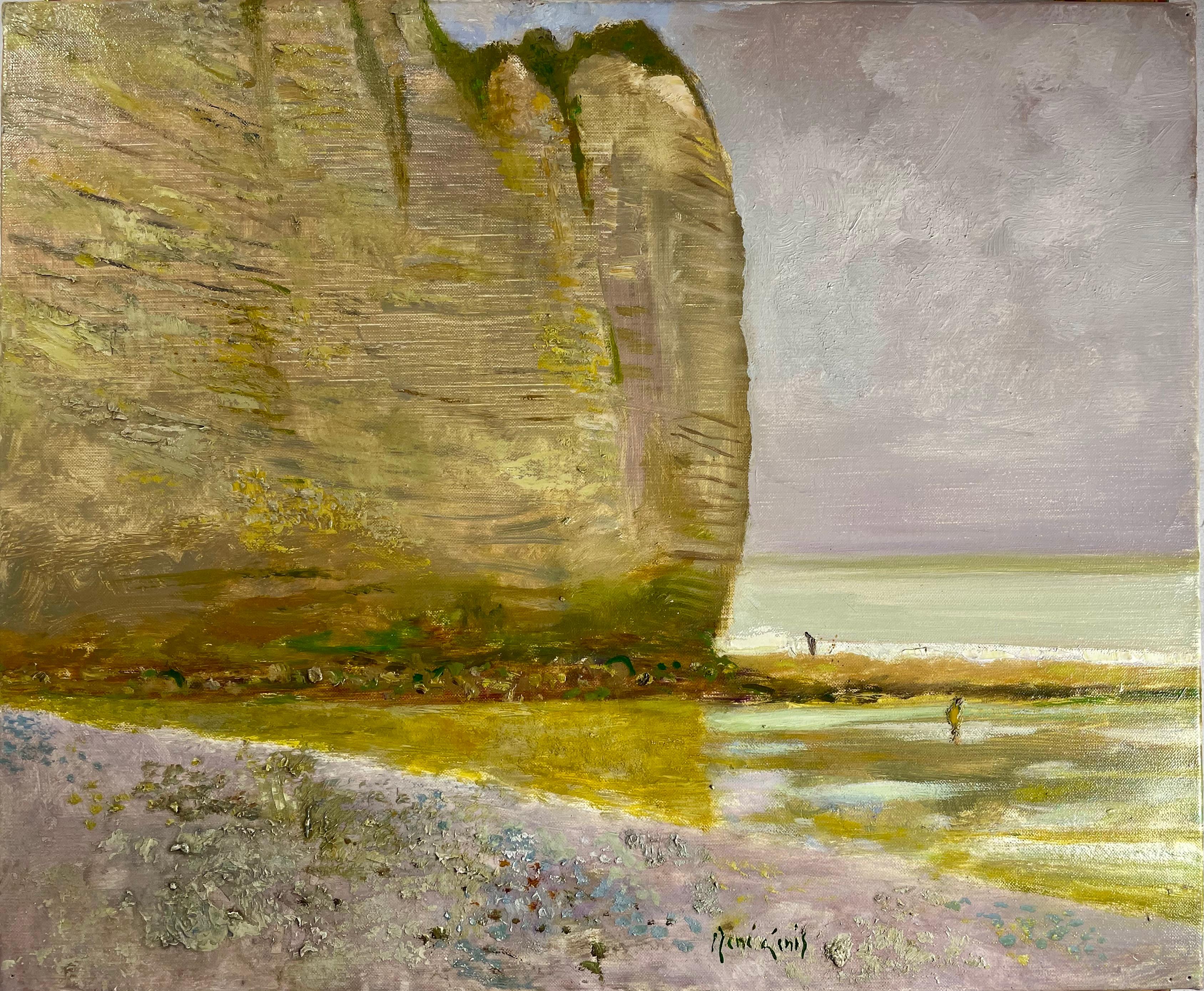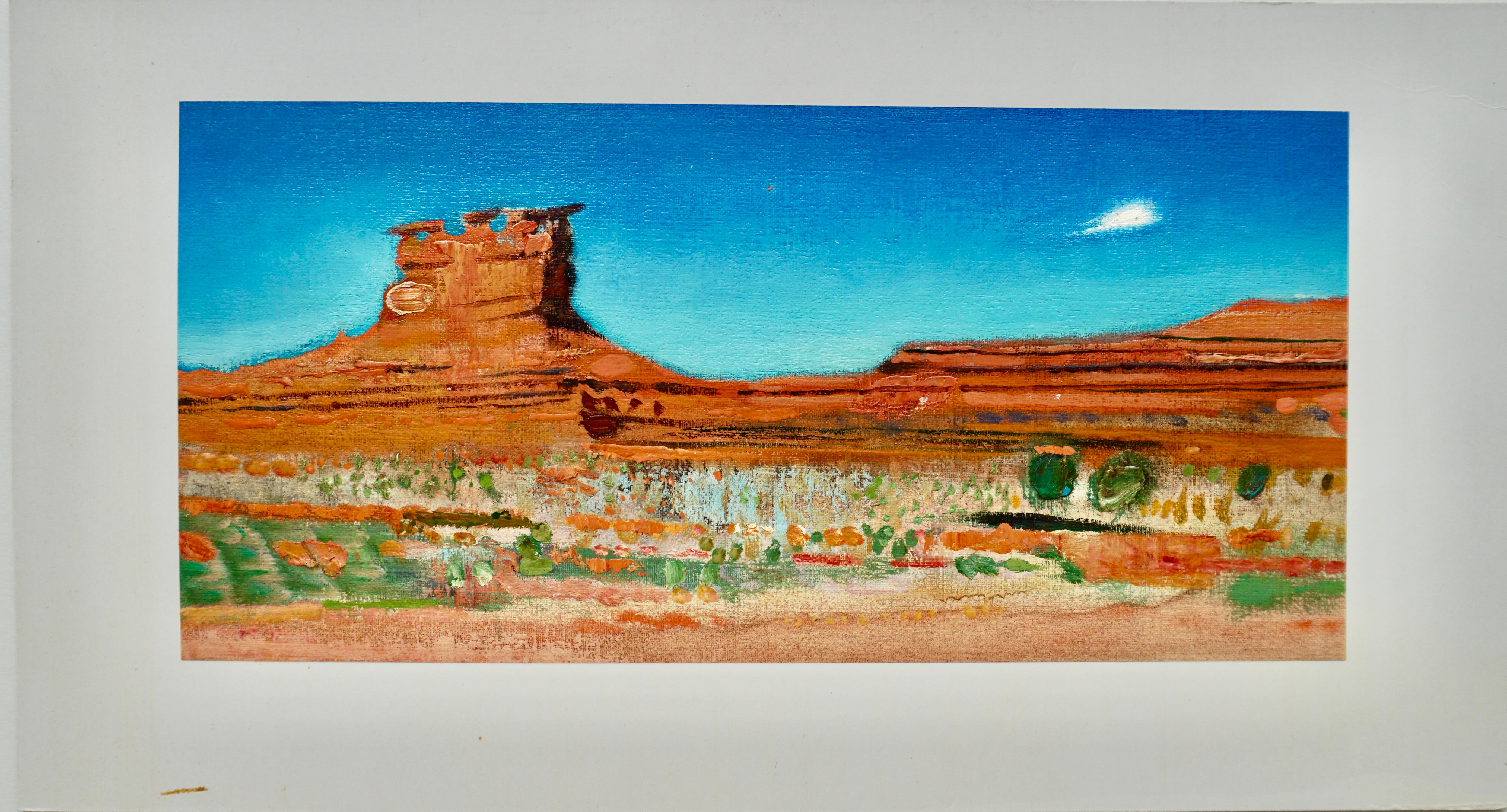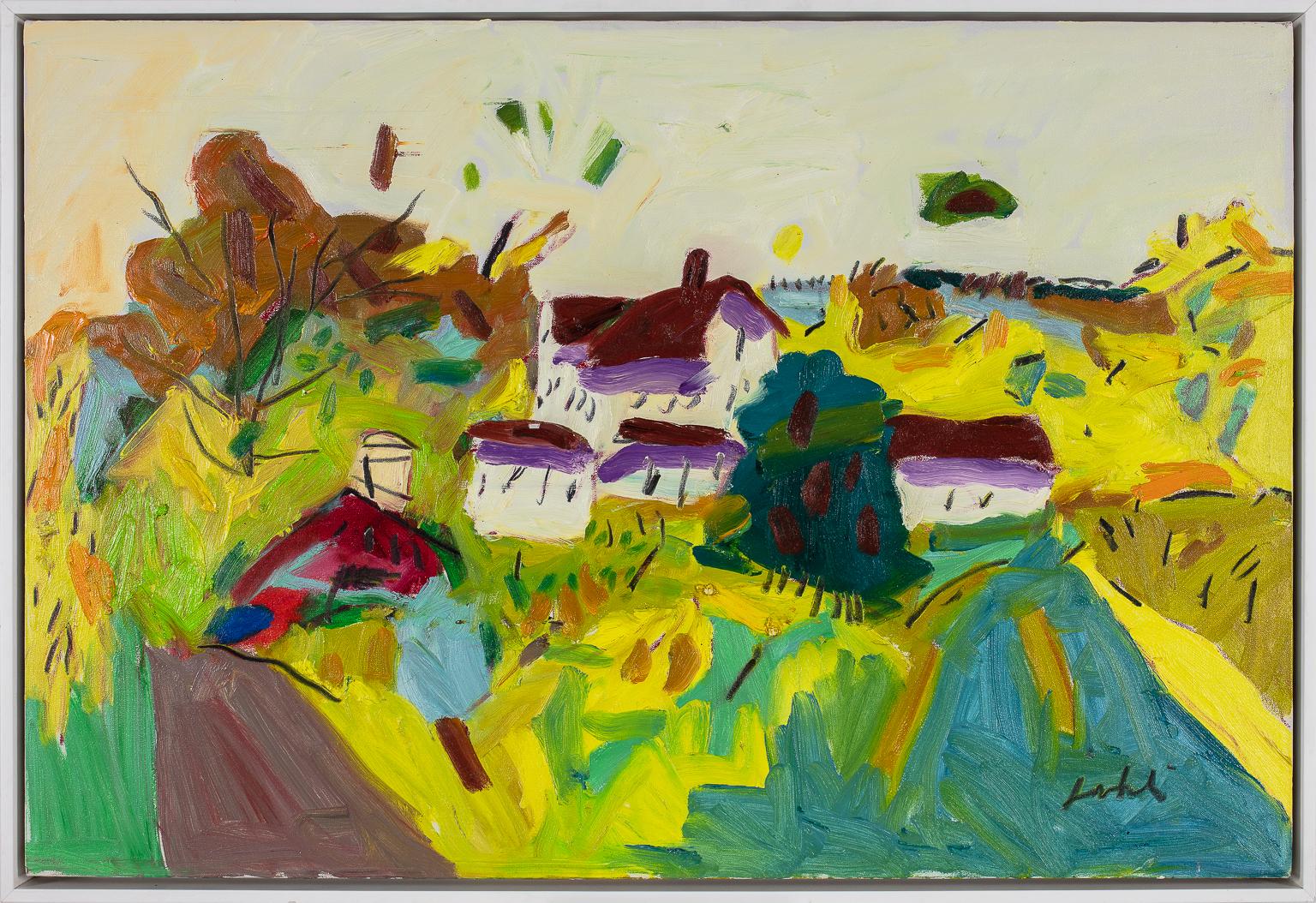Items Similar to "Misty January"
Want more images or videos?
Request additional images or videos from the seller
1 of 5
Harry Leith-Ross"Misty January"c. 1918
c. 1918
About the Item
Jim's of Lambertville Fine Art Gallery is proud to present this piece by Harry Leith-Ross (1886 - 1973).
The son of an English father and a Dutch mother, Harry Leith-Ross was born in the British Colony of Mauritius, an island in the Indian Ocean a thousand miles off the southeast coast of Africa. His first formal art instruction began in England under Stanhope Forbes, followed by studies with Jean Paul Laurens at the Academie Julian in Paris. Leith-Ross came to the United States to enroll at the National Academy of Design in New York City in 1910, and then to Woodstock, in 1913. It was in Woodstock at the Art Students League, under the tutelage of Birge Harrison and John F. Carlson, that Leith-Ross would receive the training that most influenced his career as an artist.
There he formed a lifelong friendship with fellow artist, John Folinsbee. The two artists shared a studio during this time and participated in several joint exhibitions exclusively featuring their work, including an exhibit at the Louis Katz Art Gallery in New York City in 1915.
During the First World War, Leith-Ross served in the U.S. infantry, and upon his release, spent a summer painting in England. While there he participated in a solo exhibition at The Little Gallery in Worthing in 1919. It was said of Leith-Ross by an art critic in a local English newspaper: “An exquisite sense of color, perfect draftsmanship, a thorough grasp of composition, and a deep insight into nature, make of Harry Leith-Ross not only a brilliant painter but a poet”.
Upon returning to the United States, Leith-Ross resided once again in Woodstock where he taught painting. Leith-Ross would often visit his close friend, John Folinsbee, who moved to New Hope in 1916 following his marriage to Ruth Baldwin Folinsbee. Leith-Ross was the best man in his wedding.
Some years later, Leith-Ross met Emily, and the couple wed in 1925. They remained in Woodstock until purchasing a home in the Jericho Valley on the outskirts of New Hope in 1936, where Leith-Ross remained until the end of his life.
Leith-Ross painted a wide array of subjects. His earlier works (1912-1930) are very finely painted impressionist landscapes consisting of small, tight brush strokes and a colorful refreshing palette. The early paintings usually depict Woodstock, New Hope and Gloucester. His later works often include figures and his application of paint is lighter. His skillful handling of shadows and light give the later works (1935-60) a striking resemblance to those of Edward Hopper. Many of these paintings depict the landscape surrounding his home in Jericho Valley and views of New England. Leith-Ross was also a gifted watercolorist. He made occasional trips to Europe and often summered in Rockport and Gloucester, where he held painting classes as well.
Harry Leith-Ross exhibited widely and won more than forty awards. He participated in exhibitions at the National Academy of Design, the Salmagundi Club, the Pennsylvania Academy of the Fine Arts, the Society of Independent Artists, the Corcoran Gallery Biennials, the Carnegie Institute, the Art Institute of Chicago, the American Watercolor Society and the Metropolitan Museum of Art.
- Creator:Harry Leith-Ross (1886-1973, American)
- Creation Year:c. 1918
- Dimensions:Height: 26 in (66.04 cm)Width: 30 in (76.2 cm)
- Medium:
- Period:
- Condition:
- Gallery Location:Lambertville, NJ
- Reference Number:
About the Seller
5.0
Vetted Seller
These experienced sellers undergo a comprehensive evaluation by our team of in-house experts.
Established in 1997
1stDibs seller since 2014
36 sales on 1stDibs
Typical response time: 6 hours
- ShippingRetrieving quote...Ships From: Lambertville, NJ
- Return PolicyThis item cannot be returned.
More From This SellerView All
- "Yard Work, Stockton, NJ"By Alexander FarnhamLocated in Lambertville, NJJim’s of Lambertville is proud to offer this artwork. Signed lower right. Complemented by a hand carved and gilt frame. Alexander Farnham (b.1926) Alexander Farnham studied with Anne Steele Marsh, Van Deering Perrine, and at the Art Students League with George Bridgman...Category
1950s American Impressionist Landscape Paintings
MaterialsCanvas, Oil
- "Buttonwood Inn"By Joseph BarrettLocated in Lambertville, NJJim’s of Lambertville is proud to offer this artwork by: Joseph Barrett (b. 1936) Joseph Barrett was born in Midland, North Carolina, in 1936 and studied at the Massachusetts Colle...Category
20th Century American Impressionist Landscape Paintings
MaterialsOil, Canvas
- "Under the Willow"By Joseph BarrettLocated in Lambertville, NJJim’s of Lambertville is proud to offer this artwork. Signed lower right. Artist designed frame. Joseph Barrett (b. 1936) Joseph Barrett was born in Midland, North Carolina, in 1...Category
20th Century American Impressionist Landscape Paintings
MaterialsOil, Canvas
- "Autumn at Ocean Grove"By Gershon BenjaminLocated in Lambertville, NJJim's of Lambertville Fine Art Gallery is proud to present this piece by Gershon Benjamin (1899 – 1985). An American Modernist of portraits, landscapes, still lifes, and urban scene...Category
1960s Landscape Paintings
MaterialsCanvas, Oil
- "Steamboat Landing"By Charles RosenLocated in Lambertville, NJJim’s of Lambertville is proud to offer this artwork by: Complemented by a hand carved and modernist style gilt frame. Illustrated in "New Hope for American Art" by James Alterman...Category
1930s American Modern Landscape Paintings
MaterialsOil, Canvas
- "Pat's House"By Robert SpencerLocated in Lambertville, NJJim’s of Lambertville is proud to offer this artwork by: Robert Spencer (1879 - 1931) One of the rarest and most important artists among the New Hope School, Robert Spencer was bor...Category
20th Century Impressionist Landscape Paintings
MaterialsCanvas, Oil
You May Also Like
- Bernhard ButerLocated in Saint Augustine, FLArtist: Bernhard Buter (1883-1959) German Title: Rhinish Landscape Medium: Oil on Canvas Dimensions: Framed 19” x 21” , Unframed 11 x 13” Bernhard Buter paints agrarian landscapes i...Category
Early 20th Century Realist Landscape Paintings
MaterialsCanvas, Oil
- "Les Falaise Normande" (The Cliffs Of Normand)By René GenisLocated in Berlin, MDRene Genis (French 1922-2004) “Les Falaise Normande” / The Cliffs of Normand. A sea scape with high cliffs, the beach, and two fishermen. The cliffs are in browns, tans and olives a...Category
1990s French School Landscape Paintings
MaterialsCanvas, Oil
- "Monument Valley"By René GenisLocated in Berlin, MDRene Genis (French 1922-2004) Monument Valley. 1967. Beautiful oranges, browns, greens against a turquoise blue sky. Oil on canvas, laid on mat. Si...Category
Mid-20th Century Landscape Paintings
MaterialsOil, Canvas
- Early oil depicting the Great Fire of LondonLocated in London, GBThe Great Fire of London in September 1666 was one of the greatest disasters in the city’s history. The City, with its wooden houses crowded together in narrow streets, was a natural fire risk, and predictions that London would burn down became a shocking reality. The fire began in a bakery in Pudding Lane, an area near the Thames teeming with warehouses and shops full of flammable materials, such as timber, oil, coal, pitch and turpentine. Inevitably the fire spread rapidly from this area into the City. Our painting depicts the impact of the fire on those who were caught in it and creates a very dramatic impression of what the fire was like. Closer inspection reveals a scene of chaos and panic with people running out of the gates. It shows Cripplegate in the north of the City, with St Giles without Cripplegate to its left, in flames (on the site of the present day Barbican). The painting probably represents the fire on the night of Tuesday 4 September, when four-fifths of the City was burning at once, including St Paul's Cathedral. Old St Paul’s can be seen to the right of the canvas, the medieval church with its thick stone walls, was considered a place of safety, but the building was covered in wooden scaffolding as it was in the midst of being restored by the then little known architect, Christopher Wren and caught fire. Our painting seems to depict a specific moment on the Tuesday night when the lead on St Paul’s caught fire and, as the diarist John Evelyn described: ‘the stones of Paul’s flew like grenades, the melting lead running down the streets in a stream and the very pavements glowing with the firey redness, so as no horse, nor man, was able to tread on them.’ Although the loss of life was minimal, some accounts record only sixteen perished, the magnitude of the property loss was shocking – some four hundred and thirty acres, about eighty per cent of the City proper was destroyed, including over thirteen thousand houses, eighty-nine churches, and fifty-two Guild Halls. Thousands were homeless and financially ruined. The Great Fire, and the subsequent fire of 1676, which destroyed over six hundred houses south of the Thames, changed the appearance of London forever. The one constructive outcome of the Great Fire was that the plague, which had devastated the population of London since 1665, diminished greatly, due to the mass death of the plague-carrying rats in the blaze. The fire was widely reported in eyewitness accounts, newspapers, letters and diaries. Samuel Pepys recorded climbing the steeple of Barking Church from which he viewed the destroyed City: ‘the saddest sight of desolation that I ever saw.’ There was an official enquiry into the causes of the fire, petitions to the King and Lord Mayor to rebuild, new legislation and building Acts. Naturally, the fire became a dramatic and extremely popular subject for painters and engravers. A group of works relatively closely related to the present picture have been traditionally ascribed to Jan Griffier...Category
17th Century Old Masters Landscape Paintings
MaterialsOil, Canvas
- Flat Ledge Quarry with Golden TreesLocated in Gloucester, MAFlat Ledge Quarry is one of the many granite quarries in Rockport MA, which actively produced granite for cobblestones until the early 20th century, when asphault became the preferre...Category
2010s Contemporary Landscape Paintings
MaterialsCanvas, Oil
- ThresholdLocated in Gloucester, MAPeter Lyons’s technique approaches photographic realism, but the precision in his paintings is an attempt to communicate a state of awareness, rather than ...Category
2010s Contemporary Landscape Paintings
MaterialsOil, Canvas
Recently Viewed
View AllMore Ways To Browse
Ruth Carlson Art
Ruth Carlson
Honey Kurlander
Hugo Anton Fisher
Italian Gouache Volcano
J A Johnson On Sale
Lawrence Lipton
Lobster Float
Louis Remy Mignot
Lucien Martial
Marie Joseph Leon Clavel
Marion Gray Traver On Sale
Marjorie Reed
Marty Ricks On Sale
Maryann Lucas On Sale
Michel Adlen
Mildred Vejtasa Fenner On Sale
Mogens Erik Christien Vantore On Sale





